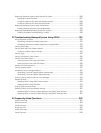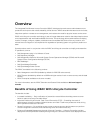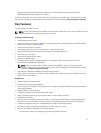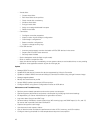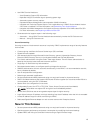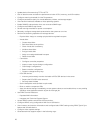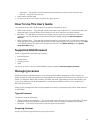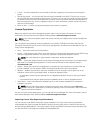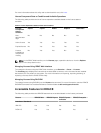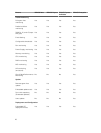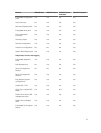• Update device firmware using TFTP or HTTP.
• Out-of-band monitor and alert the performance index of CPU, memory, and I/O modules.
• Configure warning threshold for inlet Temperature.
• Configure persistence policy for virtual addresses, initiator, and storage targets.
• View network interfaces available on host operating systems.
• Enable SNMPv3 authentication for a user to receive SNMP traps.
• Configure the SNMPv3 trap format.
• Set the warning threshold for power consumption.
• Remotely configure storage devices attached to the system at run-time.
• Perform the following operations for storage devices:
– Physical disks: Assign or unassign physical disk as a global hot spare
– Virtual disks:
* Create virtual disks
* Edit virtual disks cache policies
* Check virtual disk consistency
* Initialize virtual disks
* Encrypt virtual disks
* Assign or unassign dedicated hot spare
* Delete virtual disks
– Controllers:
* Configure controller properties
* Import or auto-import foreign configuration
* Clear foreign configuration
* Reset controller configuration
* Create or change security keys
– PCIe SSD devices:
* Inventory and remotely monitor the health of PCIe SSD devices in the server.
* Prepare the PCIe SSD to be removed
* Securely erase the data
– Set the backplane mode (unified or split mode).
– Blink or unblink component LEDs
– Apply the device settings immediately, at next system reboot, at a scheduled time, or as a pending
operation to be applied as a batch as part of the single job.
• Use iDRAC Service Module to:
– Populate WMI information.
– Integrate with Technical Support Report.
• Access iDRAC interface over direct USB connection.
• Configure iDRAC using configuration XML file on USB device.
• View inventory and monitor information and configure basic iDRAC settings using iDRAC Quick Sync
feature and a mobile device.
• Configure video capture settings
• Generate technical support report in the following ways:
20





